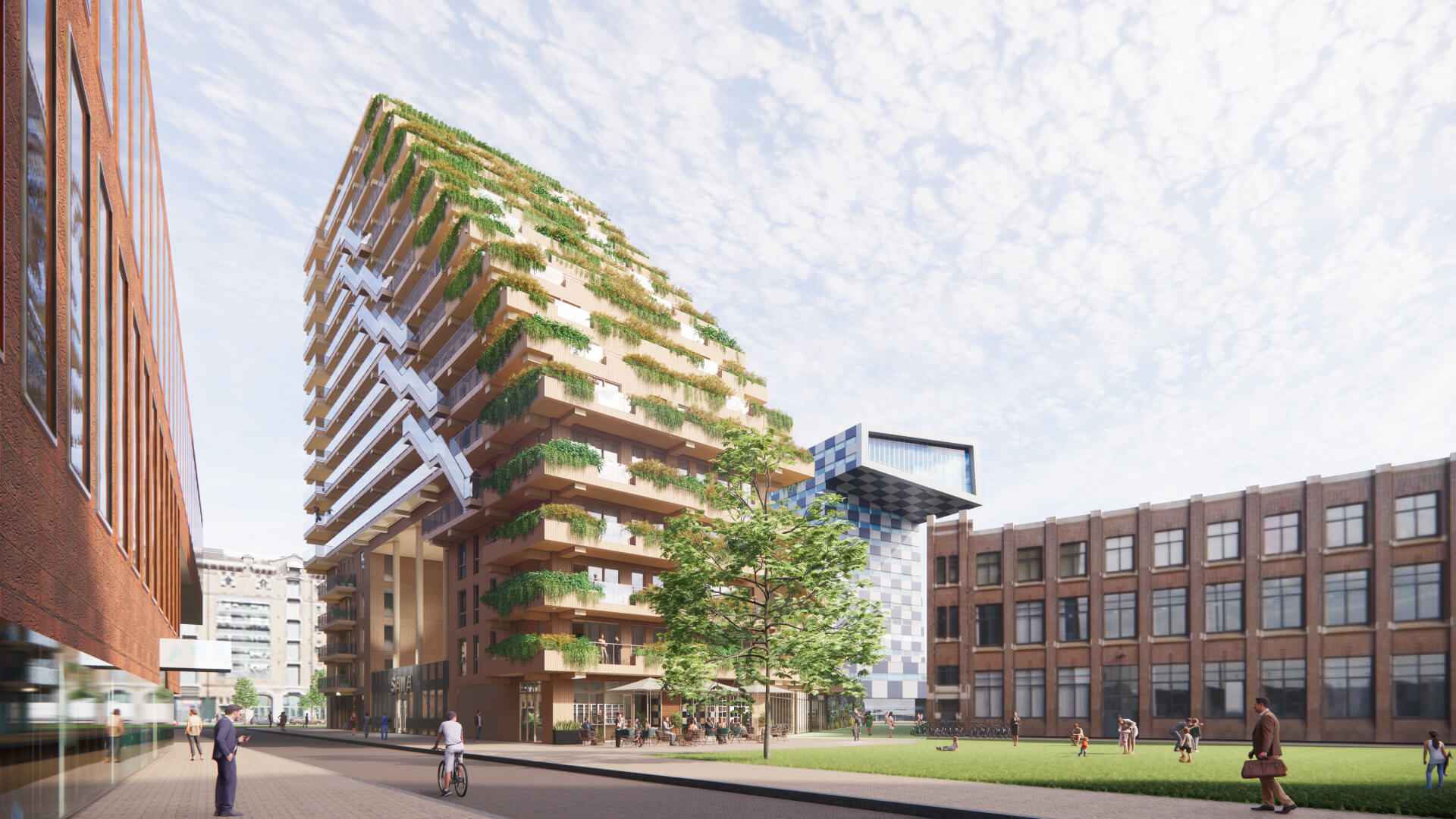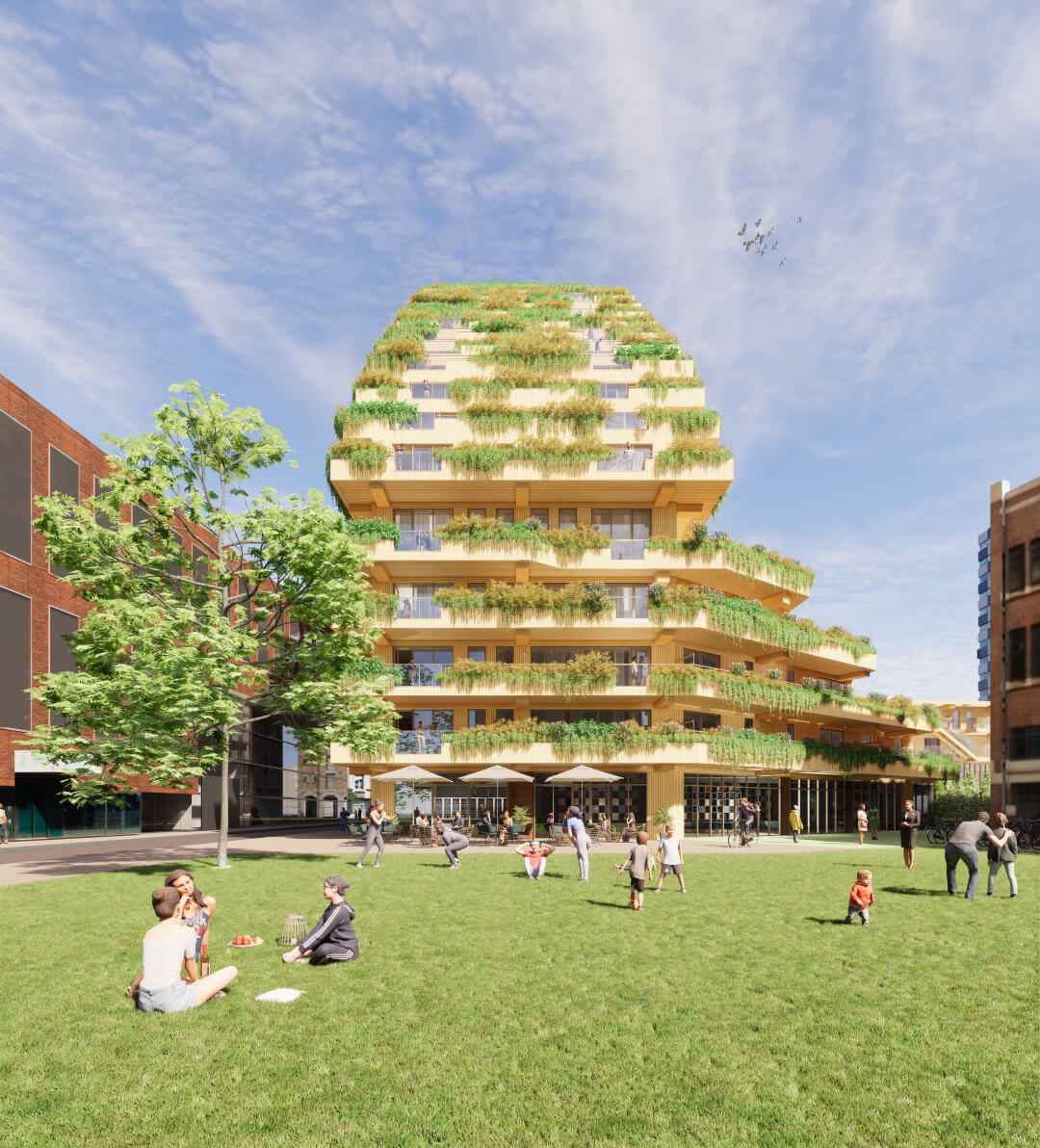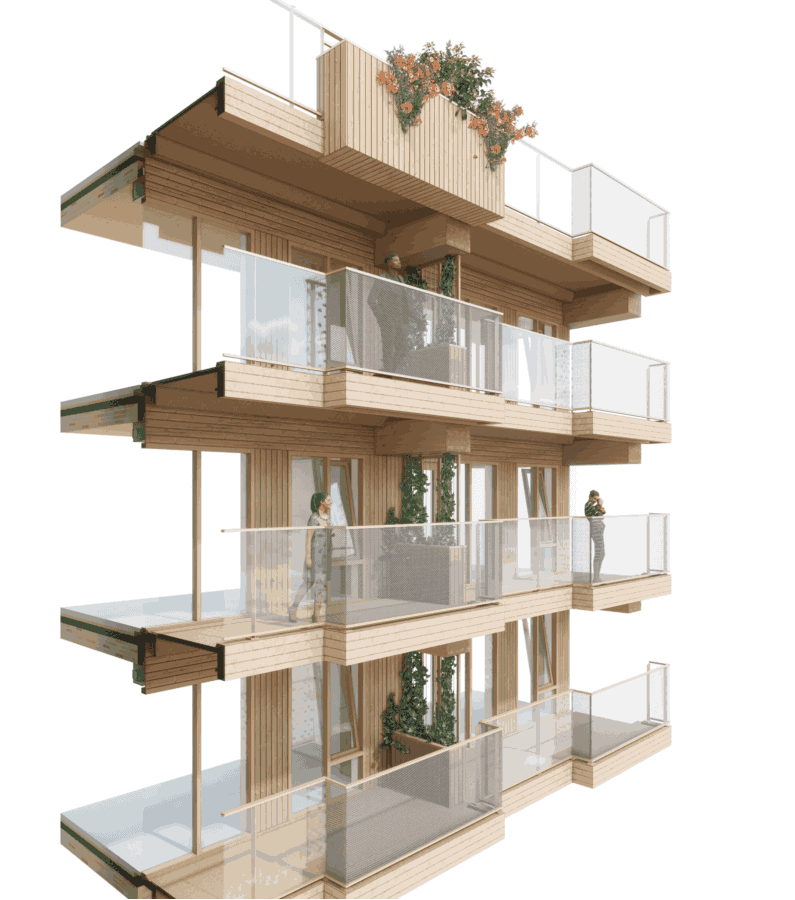
14. August 2025

The SAWA building is an innovative project fully dedicated to sustainability, energy neutrality, circularity, biodiversity, and inclusivity. With a modular main structure in cross-laminated timber (CLT) and slender balconies in Ultra High Performance Concrete (UHPC), the innovative building combines the warmth and beauty of wood with the strength and durability of UHPC.

©Mei architects and planners

Robert Platje,
Associate Partner of Mei Architects and Planners
The design team behind the SAWA building, consisting of Mei Architects and Planners, Pieters Bouwtechniek, and Era Contour, worked closely with Hi-Con to design the balconies. The main challenge was to find a way to limit the weight of the balcony slabs while still being supported by the wood-based brackets. The use of UHPC for the balconies not only solved this challenge but also created an eye-catching aesthetic. The UHPC material was designed to resemble wood with a texture and natural color that complemented the warmth and natural appearance of the CLT structure.
The building, now also called "the healthiest building in the Netherlands," has already won several architecture awards even before construction started in the first quarter of 2022.
We will soon share more details with you about the impressive CO2 reduction potential that can be achieved through the use of Hi-Con's UHPC balconies in combination with CLT structures.
We are ready to assist you with your project!
FILL OUT THE FORM AND WE WILL CONTACT YOU